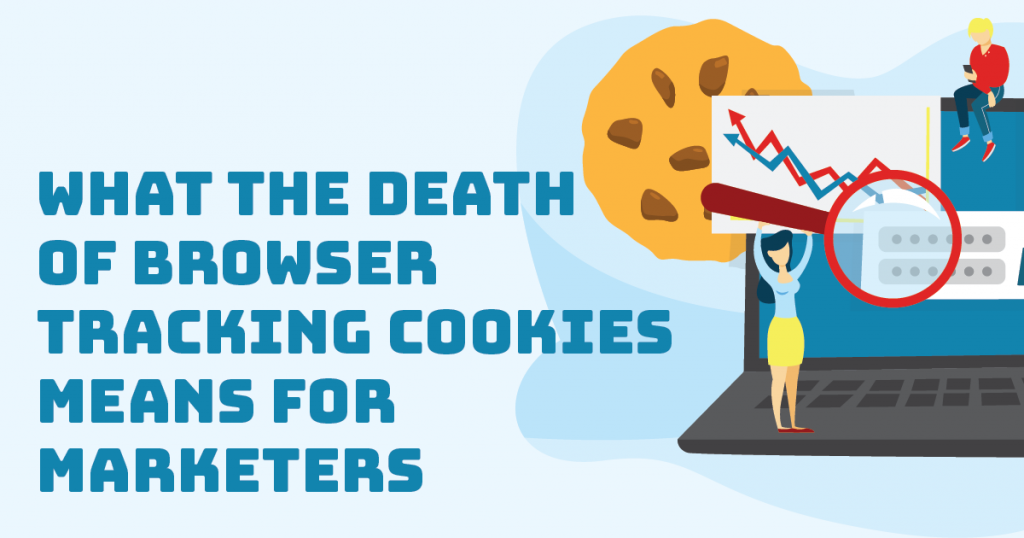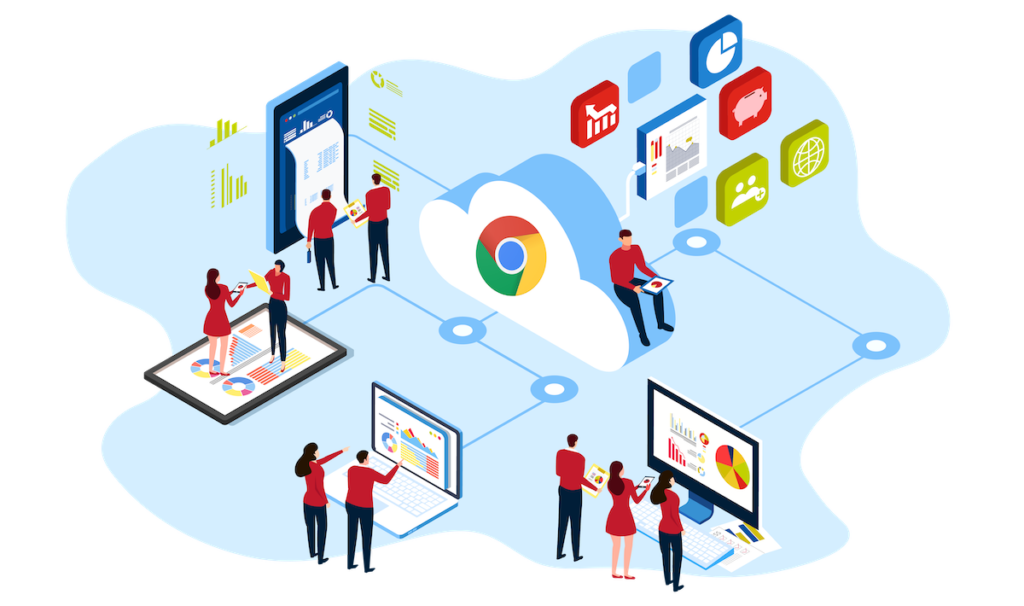
What the Death of Browser Tracking Cookies Means for Marketers
In our world, there have been grumblings, whispers, and worried gasps for quite some time about third-party tracking cookies going away for good. Nearly all digital platforms use this little piece of valuable data that allow us marketers and advertisers to track consumer behavior and data. Not only do these cookies provide beneficial information for multiple data points, but the user gets a more personalized digital ad experience.
There’s been developments over the past few years to increase transparency in this space, such as the EU’s General Data Protection Regulation (GDPR) and the California Consumer Privacy Act (CCPA). There are also options to block third-party cookies by default in browsers, such as Apple’s Intelligent Tracking Prevention (ITP) and Firefox’s Enhanced Tracking Protection (ETP). This month, Google released an experimental feature in Chrome Canary (used by developers) that gives users the option to clear third-party cookies.

Some Background: Difference Between First Party Cookies and Third Party Cookies
First-party cookies are set by the website a user is browsing and are used to keep track of activity as they move from page to page… Without first-party cookies, the website experience would be awful to impossible. Since they only track activity on the site which someone is intentionally visiting, they are not generally subject to the ire (and blocking) that third-party cookies receive.1
Third-party cookies track user activity across the web. They are placed in the browser via tracking pixels or Javascript code… Advertising networks like Google Adsense, Propeller, and others are usually the source of third-party cookies, which are used to track users across multiple websites and use that information to more precisely target them with ads.1

Since Google controls a majority of the browser market, 30% of the email client market, and over 40% of the display advertising market, it’s ripe for monopolizing the digital advertising and data markets.1
“It has kept fairly mum on what it will do in the absence of third-party cookies. The big question is whether or not Google will make a market-dominating move with a replacement… Google most certainly has a plan, but all we have for now is speculation. No matter what Google does, its digital dominance assures that it will guide the future of the entire adtech market.1

Why Chrome’s Cookie Blocking Might Have a Big Impact
The biggest impact will likely be felt in programmatic advertising because programmatic relies almost entirely on third-party cookies as the foundation for user-level targeting and measurement. Without cookies, marketers can’t target users with highly relevant ads or determine whether those ads lead to sales. And given that digital ad spending in the U.S. alone is expected to exceed $129.34 billion this year and that programmatic advertising is largely seen as the financial foundation of the internet, this is a really big deal.1
One unintended consequence of shortening the lifespan of first-party cookies could impact how marketers track website visitors. Previously, an undeleted Google Analytics cookie could live on a browser for two years. With that lifespan shortened to as little as one day in Safari, it will cause a duplication of unique users and massive inflation of their numbers in GA.1

How Digital Advertising Can Work Without Cookies
While change is coming in the marketing world, we will prevail without the use of third party cookies. Below are some ideas to what the future might hold.
Contextual Targeting
Contextual advertising is basically ads that are relevant to the other content on the screen. It’s like beer ads in a bar: go where your customers are. From the average non-marketer consumers’ perspective, contextual ads are more relevant and far less creepy feeling than cookie-based behavioral retargeting.2
With contextual targeting, the ads you see are based on the content you are looking at instead of your overall behavior profile. So when you are looking at your knitting blog, you see ads for knitting needles, and when you’re reading up on how to the click-through rate on your email newsletters, you see ads for relevant email automation platforms. The move to contextual targeting will also mean a move back to focusing on producing and distributing relevant content. Content is the new cookie.2
People Based Targeting
According to MartechSeries, people-based marketing is defined as “a means to create a customer-centric, cohesive marketing system that revolves around customers and their real-time behavioral data. This data, combined with available first-party brand data, allows brands to target customers in real-time, across devices and channels.” This method does not rely on third-party cookies to track users or gather data, and allows brands to meet customers in the places and times that they actually want to engage with them.3
According to BounceX a successful People-Based Marketing strategy boils down to these three elements: Identification, Data and Automation.3
The Value of First Party Data
Getting your hands on first-party data will be more important than ever in the absence of third-party cookies. Facebook, Google, and Amazon obviously have a huge advantage, but brands often have access to more data than they think. Not to mention that utilizing data from customers who have shown interest in reaching out to you is generally seen as more above-the-board than buying and selling access to third-party consumer data.3
One untapped source of first-party customer data might be hiding in your call center. When your customers call you, they are literally telling you what they want and how they talk about it.3

